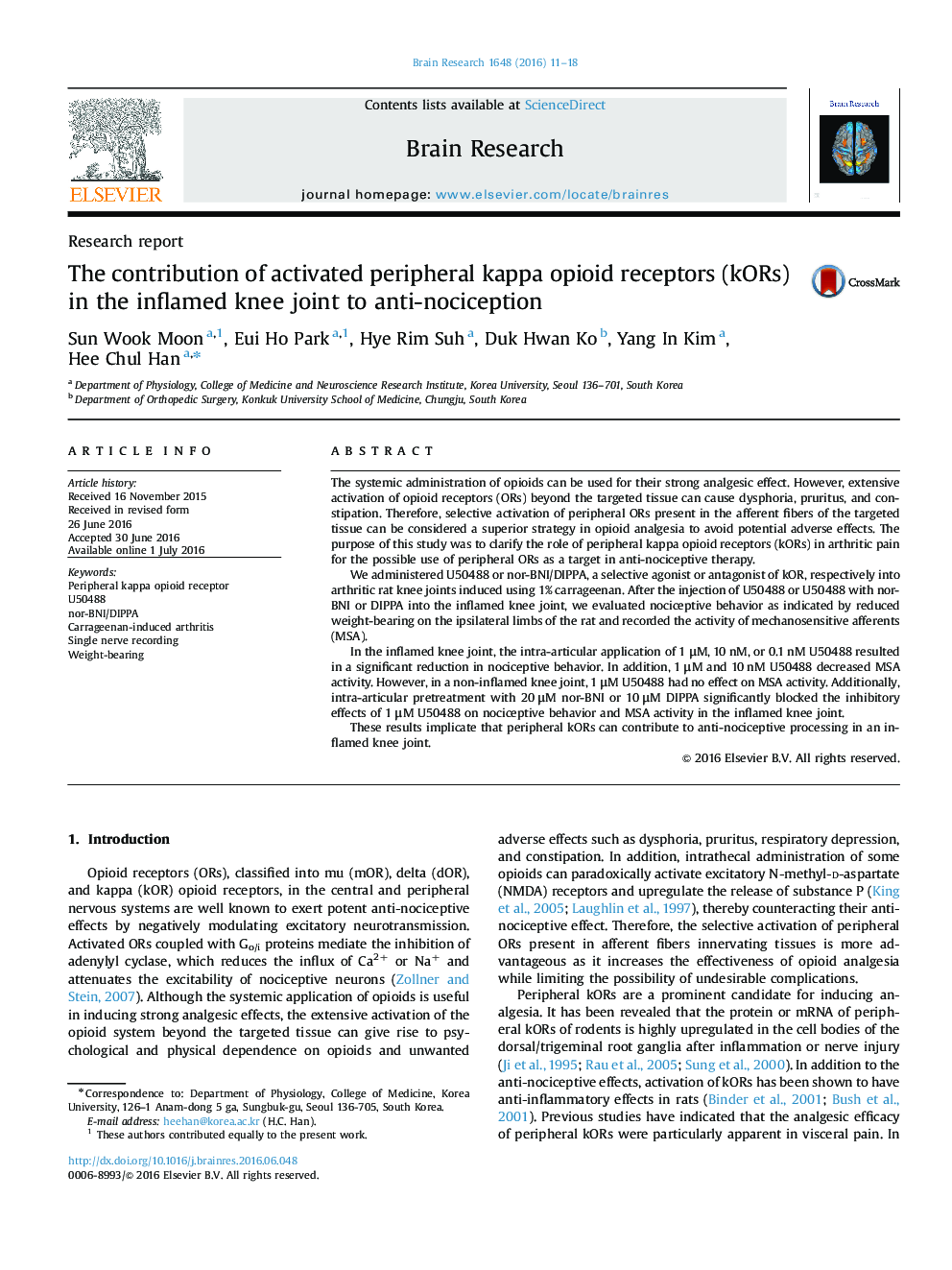| Article ID | Journal | Published Year | Pages | File Type |
|---|---|---|---|---|
| 6262318 | Brain Research | 2016 | 8 Pages |
â¢The inhibitory role of kappa opioid receptors on pain in the knee joint was evaluated.â¢Reduced weight-bearing on the inflamed joint was recovered by U50488 administration.â¢U50488 decreased MSA firing in the inflamed joint.â¢U50488 did not decrease MSA firing in the non-inflamed joint.â¢Anti-nociceptive effect of U50488 was blocked by pretreatment with nor-BNI or DIPPA.
The systemic administration of opioids can be used for their strong analgesic effect. However, extensive activation of opioid receptors (ORs) beyond the targeted tissue can cause dysphoria, pruritus, and constipation. Therefore, selective activation of peripheral ORs present in the afferent fibers of the targeted tissue can be considered a superior strategy in opioid analgesia to avoid potential adverse effects. The purpose of this study was to clarify the role of peripheral kappa opioid receptors (kORs) in arthritic pain for the possible use of peripheral ORs as a target in anti-nociceptive therapy.We administered U50488 or nor-BNI/DIPPA, a selective agonist or antagonist of kOR, respectively into arthritic rat knee joints induced using 1% carrageenan. After the injection of U50488 or U50488 with nor-BNI or DIPPA into the inflamed knee joint, we evaluated nociceptive behavior as indicated by reduced weight-bearing on the ipsilateral limbs of the rat and recorded the activity of mechanosensitive afferents (MSA).In the inflamed knee joint, the intra-articular application of 1 μM, 10 nM, or 0.1 nM U50488 resulted in a significant reduction in nociceptive behavior. In addition, 1 μM and 10 nM U50488 decreased MSA activity. However, in a non-inflamed knee joint, 1 μM U50488 had no effect on MSA activity. Additionally, intra-articular pretreatment with 20 μM nor-BNI or 10 μM DIPPA significantly blocked the inhibitory effects of 1 μM U50488 on nociceptive behavior and MSA activity in the inflamed knee joint.These results implicate that peripheral kORs can contribute to anti-nociceptive processing in an inflamed knee joint.
